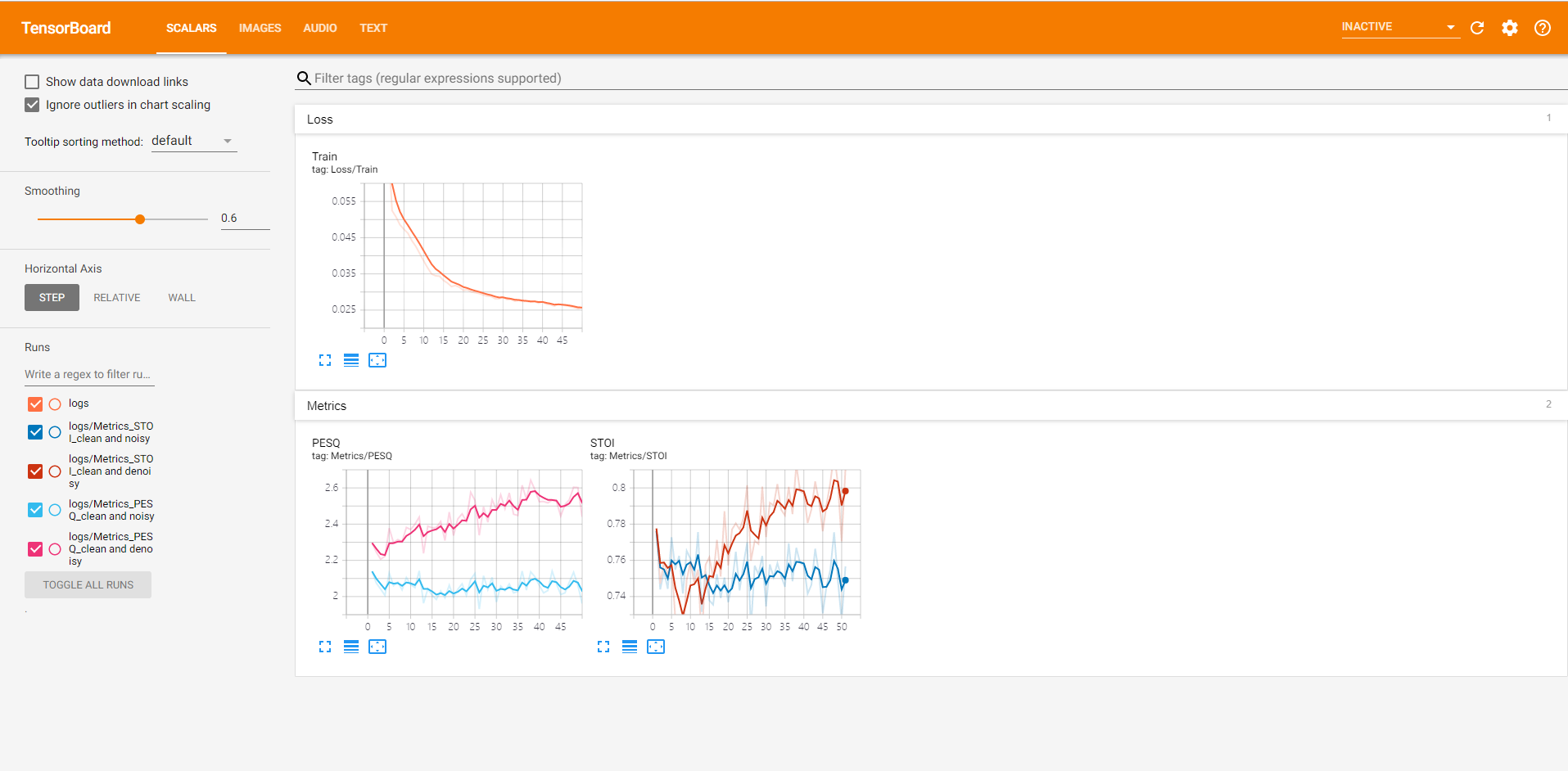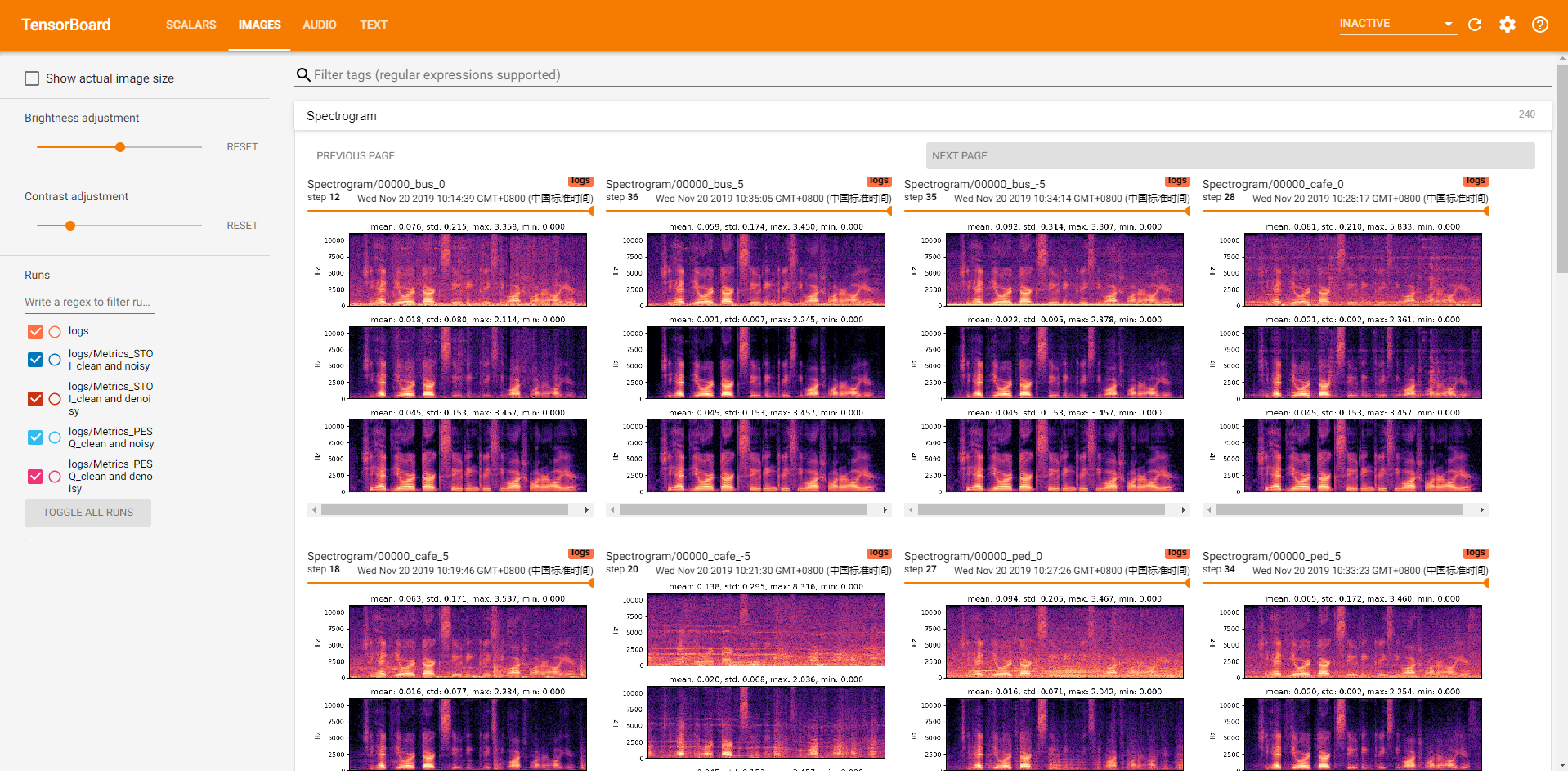haoxiangsnr / Irm Based Speech Enhancement Using Lstm
Licence: mit
Ideal Ratio Mask (IRM) Estimation based Speech Enhancement using LSTM
Stars: ✭ 66
Programming Languages
python
139335 projects - #7 most used programming language
Projects that are alternatives of or similar to Irm Based Speech Enhancement Using Lstm
Speech Emotion Recognition
Speaker independent emotion recognition
Stars: ✭ 169 (+156.06%)
Mutual labels: deep-neural-networks, lstm
Easy Deep Learning With Keras
Keras tutorial for beginners (using TF backend)
Stars: ✭ 367 (+456.06%)
Mutual labels: deep-neural-networks, lstm
Chameleon recsys
Source code of CHAMELEON - A Deep Learning Meta-Architecture for News Recommender Systems
Stars: ✭ 202 (+206.06%)
Mutual labels: deep-neural-networks, lstm
Deep Learning Time Series
List of papers, code and experiments using deep learning for time series forecasting
Stars: ✭ 796 (+1106.06%)
Mutual labels: deep-neural-networks, lstm
Pytorch convlstm
convolutional lstm implementation in pytorch
Stars: ✭ 126 (+90.91%)
Mutual labels: deep-neural-networks, lstm
Predictive Maintenance Using Lstm
Example of Multiple Multivariate Time Series Prediction with LSTM Recurrent Neural Networks in Python with Keras.
Stars: ✭ 352 (+433.33%)
Mutual labels: deep-neural-networks, lstm
Video Classification Cnn And Lstm
To classify video into various classes using keras library with tensorflow as back-end.
Stars: ✭ 218 (+230.3%)
Mutual labels: deep-neural-networks, lstm
Gdax Orderbook Ml
Application of machine learning to the Coinbase (GDAX) orderbook
Stars: ✭ 60 (-9.09%)
Mutual labels: deep-neural-networks, lstm
Ner Lstm
Named Entity Recognition using multilayered bidirectional LSTM
Stars: ✭ 532 (+706.06%)
Mutual labels: deep-neural-networks, lstm
Jlm
A fast LSTM Language Model for large vocabulary language like Japanese and Chinese
Stars: ✭ 105 (+59.09%)
Mutual labels: deep-neural-networks, lstm
Deepseqslam
The Official Deep Learning Framework for Route-based Place Recognition
Stars: ✭ 49 (-25.76%)
Mutual labels: deep-neural-networks, lstm
Pytorch Learners Tutorial
PyTorch tutorial for learners
Stars: ✭ 97 (+46.97%)
Mutual labels: deep-neural-networks, lstm
Pytorch Kaldi
pytorch-kaldi is a project for developing state-of-the-art DNN/RNN hybrid speech recognition systems. The DNN part is managed by pytorch, while feature extraction, label computation, and decoding are performed with the kaldi toolkit.
Stars: ✭ 2,097 (+3077.27%)
Mutual labels: deep-neural-networks, lstm
Bitcoin Price Prediction Using Lstm
Bitcoin price Prediction ( Time Series ) using LSTM Recurrent neural network
Stars: ✭ 67 (+1.52%)
Mutual labels: deep-neural-networks, lstm
Flow Forecast
Deep learning PyTorch library for time series forecasting, classification, and anomaly detection (originally for flood forecasting).
Stars: ✭ 368 (+457.58%)
Mutual labels: deep-neural-networks, lstm
Sangita
A Natural Language Toolkit for Indian Languages
Stars: ✭ 43 (-34.85%)
Mutual labels: deep-neural-networks, lstm
Time Attention
Implementation of RNN for Time Series prediction from the paper https://arxiv.org/abs/1704.02971
Stars: ✭ 52 (-21.21%)
Mutual labels: deep-neural-networks, lstm
Deep Ranking
Learning Fine-grained Image Similarity with Deep Ranking is a novel application of neural networks, where the authors use a new multi scale architecture combined with a triplet loss to create a neural network that is able to perform image search. This repository is a simplified implementation of the same
Stars: ✭ 64 (-3.03%)
Mutual labels: deep-neural-networks
IRM based Speech Enhancement using LSTM
基于理想浮值掩蔽(Ideal Ratio Mask,IRM)使用 LSTM 进行语音增强。
准备
- Python 3.7.x
- CUDA 10.1
- Pytorch 1.3
conda install tensorboard
pip install matplotlib librosa pystoi json5
pip install https://github.com/vBaiCai/python-pesq/archive/master.zip
使用方法
git clone https://github.com/haoxiangsnr/UNetGAN.git
训练(train.py)
使用 train.py 训练模型,接收如下参数:
-
-h,显示帮助信息 -
-C,--config, 指定训练相关的配置文件,通常存放于config/train/目录下,配置文件拓展名为json5 -
-R,--resume, 从最近一次保存的模型断点处继续训练
语法:python train.py [-h] -C CONFIG [-R],例如:
python train.py -C config/20121212_noALoss.json5
# 训练模型所用的配置文件为 config/20121212_noALoss.json5
# 默认使用所有的GPU训练
CUDA_VISIBLE_DEVICES=1,2 python train.py -C config/20121212_noALoss.json5
# 训练模型所用的配置文件为 config/20121212_noALoss.json5
# 使用索引为1、2的GPU训练
CUDA_VISIBLE_DEVICES=1,2 python train.py -C config/20121212_noALoss.json5 -R
# 训练模型所用的配置文件为 config/20121212_noALoss.json5
# 使用索引为1、2的GPU训练
# 从最近一次保存的模型断点处继续训练
补充说明:
- 一般训练所需要的配置文件名都放置在
config/train/目录下,配置文件拓展名为json5 - 配置文件中的参数作用见“参数说明”部分
增强(enhancement.py)
TODO
测试(test.py)
TODO
可视化
训练过程中产生的所有日志信息都会存储在<config["root_dir"]>/<config filename>/目录下。这里的<config["root_dir"]>指配置文件中的 root_dir参数的值,<config filename>指配置文件名。
假设用于训练的配置文件为config/train/sample_16384.json5,sample_16384.json中root_dir参数的值为/home/Exp/UNetGAN/,那么训练过程中产生的日志文件会存储在 /home/Exp/UNetGAN/sample_16384/ 目录下。该目录包含以下内容:
-
logs/: 存储Tensorboard相关的数据,包含损失曲线,语音波形,语音文件等 -
checkpoints/: 存储模型训练过程中产生的所有断点,后续可通过这些断点来重启训练或进行语音增强 -
<Date>.json文件: 训练时使用的配置文件的备份
参数说明
训练,测试与增强都需要指定具体的配置文件。
训练参数
训练过程中产生的日志信息会存放在<config["root_dir"]>/<config filename>/目录下
{
"seed": 0, // 为Numpy,PyTorch设置随机种子,保证实验的可重复性
"description": "", // 实验描述
"root_dir": "/media/imucs/DataDisk/haoxiang/Experiment/IRM", // 项目根目录
"cudnn_deterministic": false, // 开启可保证实验的可重复性,但影响性能
"trainer": {
"epochs": 1200, // 实验进行的总轮次
"save_checkpoint_interval": 10, // 存储模型断点的间隔
"validation": {
"interval": 10, // 执行验证的间隔
"find_max": true,
"custom": {
"visualize_audio_limit": 20, // 验证时 Tensorboard 中可视化音频文件的数量
"visualize_waveform_limit": 20, // 验证时 Tensorboard 中可视化语音波形的数量
"visualize_spectrogram_limit": 20, // 验证时 Tensorboard 中可视化语谱图的数量
}
}
},
"generator_model": {
"module": "model.generator_basic_model", // 存放生成器的文件
"main": "GeneratorBasicModel", // 生成器类
"args": {} // 传递给生成器类的参数
},
"model": {
"module": "model.discriminator_basic_model", // 存放判别器的文件
"main": "DiscriminatorBasicModel", // 判别器类
"args": {} // 传递给判别器类的参数
},
"loss_function": {
"module": "util.loss", // 存放生成器额外损失的文件
"main": "mse_loss", // 具体损失函数
"args": {} // 传给该函数的参数
},
"optimizer": {
"lr": 0.0002, // 学习率
"beta1": 0.9, // Adam动量参数1
"beta2": 0.999 // Adam动量参数2
},
"train_dataset": {
"module": "dataset.irm_dataset",
"main": "IRMDataset",
"args": {
// 详见 dataset/*_dataset.py
}
},
"validation_dataset": {
"module": "dataset.irm_dataset",
"main": "IRMDataset",
"args": {
// 详见 dataset/*_dataset.py
}
},
"train_dataloader": {
"batch_size": 400,
"num_workers": 40,
"shuffle": true,
"pin_memory": true
}
}
验证参数
TODO
测试参数
TODO
可重复性
我们已经将可以设置随机种子的位置抽离成了可配置的参数,这保证了基本的可重复性。 如果你使用 CuDNN 进行运算加速,还可以进一步设置确定性参数“cudnn_deterministic”为“True”,但这会影响性能。
须知
当前项目并非严肃的生产项目,若你发现 bug,请不要犹豫,直接提交 pull request.
ToDo
- [x] LSTM models
- [x] Training logic
- [x] Validation logic
- [x] Visualization of validation set (waveform, audio, spectrogram, config)
- [x] PESQ and STOI metrics
- [x] Optimize config parameters
- [x] Improve the documentation
- [ ] Test script
- [ ] English version README
LICENSE
MIT License
Copyright (c) 2019 郝翔
Note that the project description data, including the texts, logos, images, and/or trademarks,
for each open source project belongs to its rightful owner.
If you wish to add or remove any projects, please contact us at [email protected].


